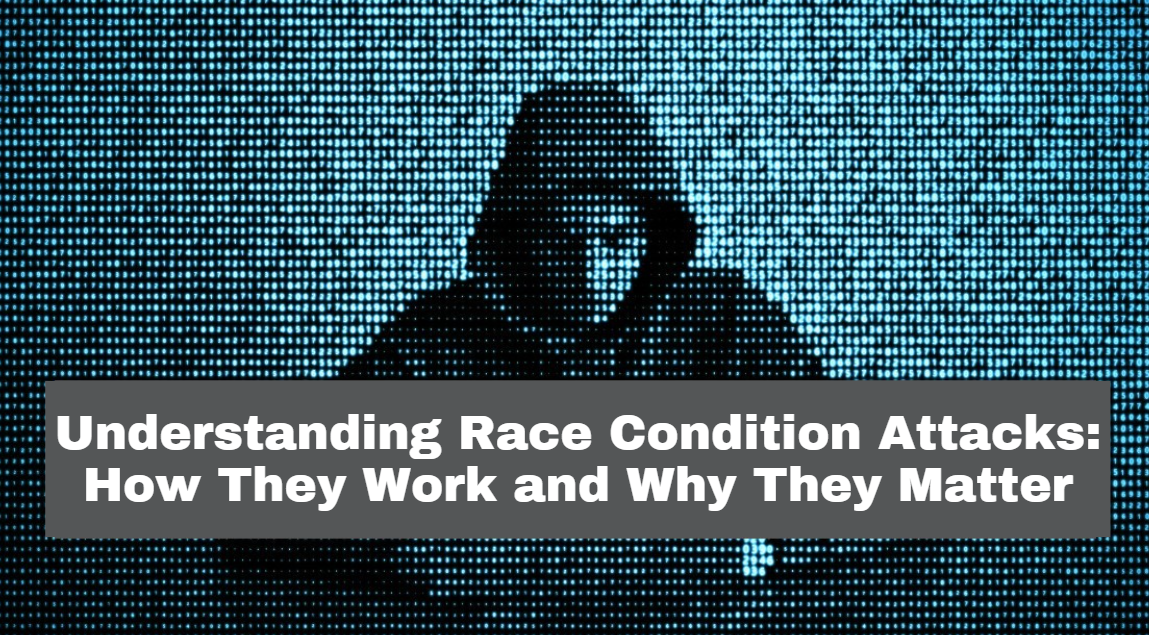Software programs rely on various processes that concurrently exist, process data, and deploy in the runtime of an application. Often, these processes have to be executed in a certain order to deliver the expected result. If the order in which processes changed, they could cease to be effective or return wildly different results.
A race condition attack makes use of these small errors. When a race condition is interrupted or purposely tampered with, hackers can use the erroneous results as a potential vulnerability, entering into a system where they shouldn’t or gaining power over your operations.
In this article, we’ll explore what a race condition vulnerability is, touch on how malicious actors use them, and outline how your business can keep itself safe from this potential attack vector.
What is a Race Condition Vulnerability?
In a multithreaded program (where more than one segment of code will access shared variables), two threads may both attempt to access this resource section at the same time. If this occurs, they will compete with one another, attempting to access and manipulate the data first.
While this may not create any problems, if the two threads that are acting concurrently interact in an unexpected manner, it could create any number of problems. The issue with race conditions is that any two processes could intersect, creating a result that software developers hadn’t previously thought of.
One example of this would be systems interacting in the wrong order, for instance – asking a user for their login details and then showing their private information. If the latter came before the former, this would create a disastrous security event as absolutely anyone could see this private data.
Alternatively, incompatible business logic between two threads may create delays. After the first thread executes, there may be a delay before the second one does, which could create an opportunity for hackers to then interact with the system in an unintended manner.
Due to their unpredictable nature, race conditions are often extremely difficult to detect. Equally, as they are somewhat random, it can be difficult for software developers and security experts to model them and prepare for possible multi-thread interactions.
How Race Conditions Can Be Exploited
When two threads attempt to use the same resources concurrently, any number of results can occur – especially depending on the order in which they manage to interact with the program. By manipulating these timings or making use of a strange intersection, hackers can find exploits in your system or force a certain condition to execute.
Here are the main three ways that malicious actors take advantage of race conditions:
- Counting Errors: When several threads interact in a certain order, software developers can trace how the interactions will occur and what their effects will be. If these processes fall out of sync, the processes may not accurately record what they are doing. This could create counting errors, which could translate into a program consuming resources or allocating something to an account without recording the movement. A malicious actor could use counting errors to award themselves additional currency in a decentralized exchange.
- Time of Use Exploits: Certain operations in a system will take time as the system has to check its database for information. For example, if a thread asked the system to open a file, it would first have to check if that file even existed. The small delays created by these tasks can create a window of opportunity for hackers to introduce conditions or files to the system, which they can then use to induce vulnerabilities.
- Privilege and Status Change: Some actions in a closed system will change a user’s level of privilege. Often, privilege levels are used to grant access to certain resources or areas within a database. By tricking a process into increasing a privilege by using a race condition delay, hackers may be able to access areas they shouldn’t.
- Systems Damage: If there is a lack of synchronization between processes, unexpected conflicts could result in one process overwriting the other and vice versa. If this is an unpredictable interaction, it could lead to a constant deletion, where data becomes increasingly more corrupted until it is rendered useless. If a malicious actor can manipulate a service into making this occur, they could compromise the data integrity of a business.
Each of the examples above can create a valuable opportunity for malicious actors to breach your system and gain complete access. Equally, if two threads intersect, they could simply break your system, leaving it in an idle state, which hackers can then take advantage of.
With over 353 million people being impacted by data breaches each year, businesses should do everything possible to protect against race conditions and other security exploits.
Protecting Against Race Condition Attacks
Race conditions are unfortunately a fairly natural part of programming, as several processes will need to draw upon the same areas for your app to function. However, there are steps that developers can take to decrease the likelihood of race condition attacks from occurring. For example, businesses can teach developers to practice secure coding, minimizing the chance of a race condition vulnerability from occurring.
Equally, businesses can employ a number of security solutions to identify race condition attacks and then block malicious actors from being able to exploit them. By pinpointing an attack as it begins with modern security tools, teams will have the maximum amount of time possible to respond to the threat and reduce its severity.
While race conditions should be a concern, effective management will reduce their potency in your organization.
